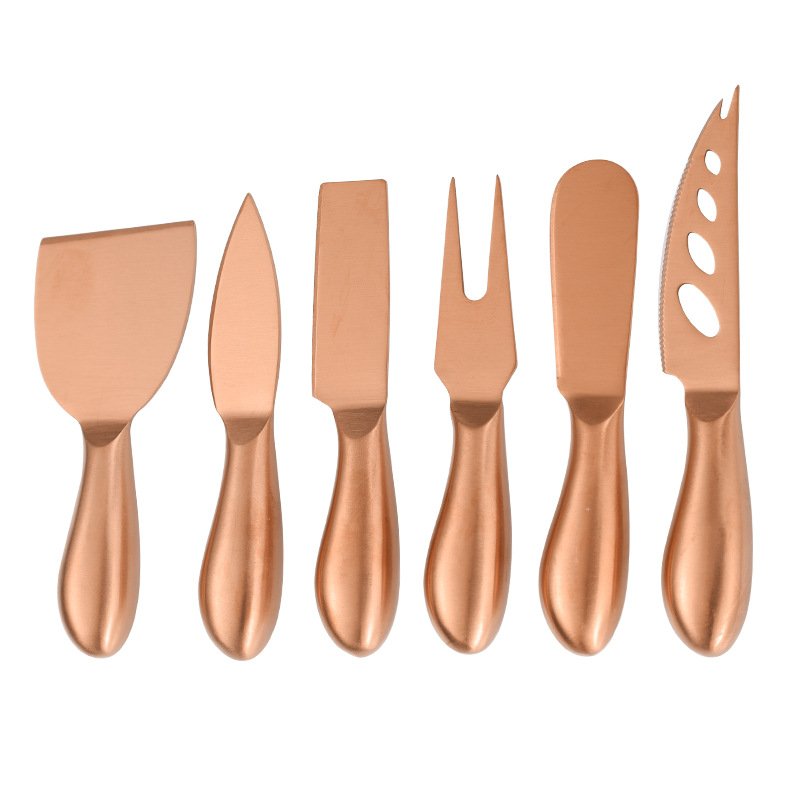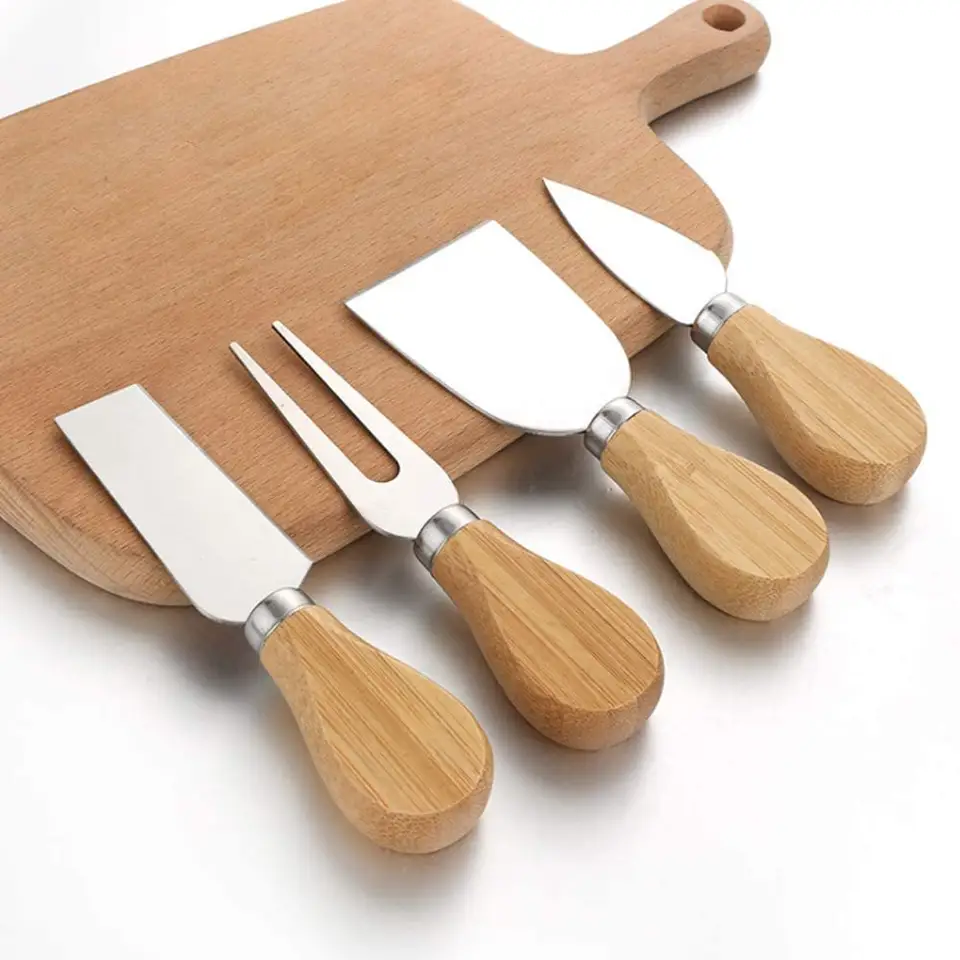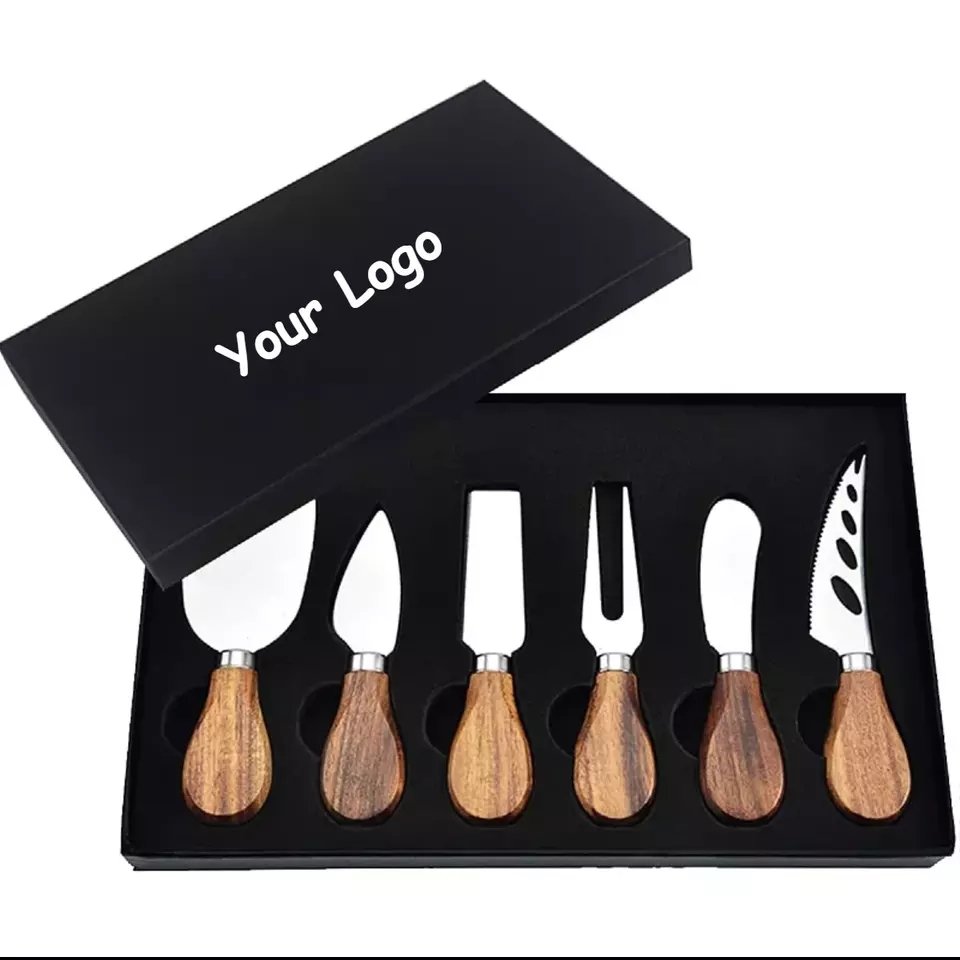Gift-ready cutlery sets are often overlooked, but they could be the secret weapon to boost your sales in competitive overseas markets.
Yes, gift-ready stainless steel cutlery can drive higher sales in the US and Europe by combining premium appeal with practical function. Custom packaging enhances perceived value and taps into seasonal demand.
Many suppliers focus only on quality or price, forgetting how much presentation and packaging affect buying decisions—especially in gift-oriented markets. Let’s dive into how a well-designed gift-ready cutlery set can help you win over US and European buyers and grow your export business.
Table of Contents
Why is packaging so important in the cutlery market?
Packaging isn’t just about looks—it can influence buying behavior and drive emotional connection with your product.
In the US and Europe, packaging can make or break a purchase, especially for gifts. It affects first impressions, enhances perceived value, and differentiates your brand.
First Impressions Matter
When a customer walks into a store or scrolls through a website, packaging is the first thing they see. It communicates your brand, your quality, and your positioning in just a few seconds. Especially in gift scenarios, people want to feel confident that what they’re giving looks elegant and thoughtful.
What Consumers Want in Packaging
| Feature | Why It Matters | European Market Preference | US Market Preference |
|---|---|---|---|
| Clean, minimal design | Reflects modern taste and quality | ✅ Yes | ✅ Yes |
| Eco-friendly materials | Sustainability concern | ✅ Strong Demand | ✅ Growing Demand |
| Easy to open/reseal | Convenience factor | ✅ Important | ✅ Important |
| Visible branding | Enhances recognition and trust | ✅ Preferred | ✅ Preferred |
| Gifting appeal (ribbon, box) | Enhances emotional value | ✅ High demand during holidays | ✅ Strong during gifting season |

From Practical to Emotional Value
Packaging turns a practical product into an emotional experience. A standard cutlery set might be seen as just a household item. But when placed in a luxurious box with a card and brand story, it becomes something worth gifting. This emotional upgrade is key in higher-income markets.
What gift occasions drive cutlery sales in Western markets?
People don’t just buy cutlery for themselves—they buy it to give it to others during special moments.
Occasions like weddings, housewarmings, Christmas, and anniversaries create huge opportunities for selling cutlery as gifts, especially when it’s attractively packaged.
Top Gift-Giving Occasions
Let’s look at when people in the US and Europe are most likely to buy cutlery as gifts:
| Occasion | Timing | Market Size Potential | Packaging Expectations |
|---|---|---|---|
| Christmas | Late Nov–Dec | Very High | Luxurious, festive, red/gold themes |
| Weddings | All year, spring/summer peak | High | Elegant, neutral tones, embossed logos |
| Housewarming | Year-round | Medium | Compact, modern, with brand storytelling |
| Anniversaries | Year-round | Medium | Personal touch, sleek design |
| Mother’s Day | May (US), March (UK) | Medium | Feminine, soft colors, special edition |
Seasonal Customization Tips
Buyers in these markets look for products that feel tailor-made for the occasion. That doesn’t always mean changing the product. Sometimes, it’s just the packaging that needs to reflect the moment. Limited-edition packaging can drive urgency and allow for higher markups.
A Personal Story
Last Christmas, one of my clients in the UK launched a limited edition gold-accented cutlery set in a green velvet box. We sold out in two weeks—twice the normal order volume. That same product without the seasonal packaging had moved slowly the entire year.
How can customized gift packaging improve your brand image?
Customized gift packaging isn’t just decoration—it tells your brand’s story and sets you apart.
Customized packaging builds brand recognition and makes your product more memorable. It shows you care about the details, which high-end buyers notice.
More Than a Logo
Your packaging should do more than carry your logo. It should carry your message. A short brand mission, the craftsmanship story, or even a note from the founder can turn a cutlery set into something meaningful.
Key Elements of Brand-Centered Packaging
| Element | Purpose | How It Impacts Sales |
|---|---|---|
| Brand Story Insert | Builds emotional connection | Increases repeat buyers |
| Logo Embossing | Enhances perceived quality | Makes product feel premium |
| Custom Color Scheme | Reinforces brand identity | Improves shelf visibility |
| Thank-You Card | Adds a personal touch | Boosts customer loyalty |
| QR Code to Website | Drives traffic and post-purchase engagement | Enables upselling |
From White-Label to Brand Owner
If you’re selling B2B, offering custom packaging helps your clients become brand owners—not just resellers. That’s powerful. It means they’ll return for more, and it makes your cutlery harder to replace.
What are the most cost-effective ways to create gift-ready cutlery?
Great packaging doesn’t need to be expensive. With the right choices, you can impress without overspending.
Use modular packaging, local sourcing, and bulk material orders to create attractive gift-ready sets without breaking your budget.
Smart Material Choices
Not every gift box needs to be luxury-grade. Using coated cardboard instead of rigid plastic, or soy ink instead of metallic foil, can reduce costs while keeping a premium feel.
Efficiency-Driven Packaging Options
| Packaging Feature | Cost Level | Looks Premium | Sustainable | Customizable | Notes |
|---|---|---|---|---|---|
| Drawer-style box | Medium | ✅ Yes | ✅ Yes | ✅ Fully | Ideal for mid-range luxury |
| Magnetic lid box | High | ✅ Yes | ❌ Not always | ✅ Fully | High-end gifting, good for holidays |
| Folding kraft box | Low | ❌ Basic | ✅ Yes | ✅ Partial | Great for eco-conscious markets |
| Sleeve + insert combo | Medium | ✅ Moderate | ✅ Moderate | ✅ Fully | Affordable and easy to stack in stores |
Optimization Through Bulk Orders
Ordering packaging in bulk, especially before peak seasons, can reduce cost per unit by 20–40%. Many suppliers (including us) offer co-development services to help balance the cost and style.
What cutlery designs work best for gift markets?
Some cutlery designs naturally lend themselves to gifting—those that feel special, unique, and timeless.
Elegant, minimalist, and matte or mirror-finished cutlery with unique handle designs perform best in the gift market. Gold or black finishes also do well.
What Makes a Cutlery Set Gift-Worthy?

Here’s a breakdown of the most popular design elements for gifting:
| Feature | Appeal Reason | Best For | Notes |
|---|---|---|---|
| Mirror finish | Looks polished and elegant | Weddings, anniversaries | Timeless, easy to pair with any tableware |
| Matte finish | Modern and sleek | Housewarmings, young couples | Trendy but may scratch over time |
| Black/gold coating | Luxury, uniqueness | Holiday gifts, special editions | Needs strong coating to resist wear |
| Textured handles | Tactile and stylish | Premium markets | Adds grip and visual detail |
| Rounded edges | Safe and elegant feel | Family gifts | Feels more “friendly” than sharp lines |
A/B Testing Your Market
Different markets may prefer different designs. I recommend testing two or three variations in your next shipment. Use customer feedback to choose your winner.
One client in Germany added a laser-etched floral handle pattern to a standard matte set and rebranded it as a “Heritage Line”—it became their best-seller in wedding shops.
What are the benefits of stainless steel cutlery?
Stainless steel cutlery isn’t just about looks—it’s about long-term value.
Stainless steel cutlery is durable, corrosion-resistant, and easy to maintain, making it ideal for both everyday use and upscale dining experiences.
Long-Term Use Over Disposable Waste
One of the biggest advantages of stainless steel is that it’s reusable. In today’s sustainability-driven market, buyers are moving away from single-use plastics or cheap materials. Stainless steel gives both consumers and commercial buyers the durability they need without sacrificing aesthetics.
Key Benefits of Stainless Steel Cutlery
| Benefit | Description | Importance in Export Markets |
|---|---|---|
| Corrosion Resistance | Doesn’t rust or stain easily | ✅ Critical |
| Strength and Durability | Withstands repeated use and dishwasher cycles | ✅ High |
| Heat Resistance | Safe for hot foods and cooking environments | ✅ Medium |
| Low Maintenance | Easy to clean, doesn’t require polishing like silver | ✅ High |
| Recyclability | Fully recyclable at end-of-life | ✅ Important for EU market |
From Manufacturer to User: Value Retention
What’s interesting is how stainless steel keeps its value—not just in terms of resale or reuse, but also in branding. A high-quality stainless steel set, when branded well, can become a signature product line. And with minimal upkeep, customers are satisfied long after the sale, reducing returns and increasing word-of-mouth.
Who is the largest consumer of stainless steel?
If you want to grow your cutlery business, understanding where the demand lies is a good place to start.
China is the world’s largest consumer of stainless steel, followed by Europe and the United States, with growing demand in sectors like kitchenware, construction, and medical devices.
Stainless Steel Usage by Region
While China dominates in total consumption, that doesn’t mean it’s the only relevant market. In terms of high-end cutlery, Europe and the US lead the way due to a higher demand for branded, quality products.
| Country/Region | Usage Focus | Notes |
|---|---|---|
| China | Industrial + Household | Largest volume, but price-driven |
| European Union | Tableware + Medical + Industrial | High demand for premium-grade materials |
| United States | Kitchenware + Architecture | Steady demand, design-focused |
| India | Growing across multiple segments | Price-sensitive but expanding |
| Japan & South Korea | Specialized steel products | Small market but very high quality focus |
What This Means for Cutlery Sellers
As a seller of stainless steel cutlery, this data helps you align your product strategy. In China, you’ll face fierce price competition. But in the US and Europe, you can stand out with quality, packaging, and design. These buyers look for long-term partnerships and are more open to custom solutions—especially gift-ready ones.
Why is stainless steel often chosen for cutlery?
There are many metal options out there, but stainless steel wins out almost every time for cutlery.
Stainless steel is chosen because it combines safety, strength, aesthetic appeal, and low maintenance—all essential qualities for both home and commercial use.
The Four Pillars of Material Choice
When choosing materials for cutlery, designers and buyers evaluate them based on these criteria:
1. Food safety
2. Durability
3. Appearance
4. Cost of production
Stainless steel strikes the perfect balance across all four.
Cutlery Material Comparison
| Country/Region | Usage Focus | Notes |
|---|---|---|
| China | Industrial + Household | Largest volume, but price-driven |
| European Union | Tableware + Medical + Industrial | High demand for premium-grade materials |
| United States | Kitchenware + Architecture | Steady demand, design-focused |
| India | Growing across multiple segments | Price-sensitive but expanding |
| Japan & South Korea | Specialized steel products | Small market but very high quality focus |
The Hidden Bonus: Design Flexibility
Another reason stainless steel is so popular is that it’s friendly for mold design. Designers like Jacky can explore different handle shapes, embossing, or mixing with resin/wood handles—without compromising strength or cost too much. This makes it easier to deliver creative solutions to buyers who want to stand out.
When did stainless steel cutlery become popular?
It might seem like stainless steel cutlery has always been around—but it actually has a surprisingly modern history.
Stainless steel cutlery became popular in the 1920s, after the invention of stainless steel in 1913, and grew rapidly due to its resistance to rust and affordable mass production.
Key Historical Milestones
| Year | Event |
|---|---|
| 1913 | Harry Brearley, a British metallurgist, discovered stainless steel while developing a corrosion-resistant alloy for gun barrels. |
| 1920s | First stainless steel cutlery sets entered the UK market, replacing traditional silverware in middle-class households. |
| Post-WWII | Mass production lowered costs, making stainless steel affordable and widely used across Europe and the US. |
| Today | Stainless steel is the default material for flatware worldwide. |
From Luxury to Everyday Use
In the beginning, stainless steel was seen as a modern marvel. It was used in architecture, tools, and only later found its way into kitchens. Silver cutlery was still the symbol of wealth, but stainless steel was more practical and less labor-intensive. Over time, its affordability and low maintenance made it the preferred choice for hotels, homes, airlines, and restaurants.
Cutlery Trends Over Time
| Period | Common Material | Market Preference | Notable Trend |
|---|---|---|---|
| Pre-1900s | Silver, pewter, wood | Artisan/Handcrafted | Symbol of wealth and formality |
| 1920s–1950s | Stainless steel emerging | Affordable middle-class use | Simpler designs, mass production starts |
| 1960s–1990s | Full stainless steel | Universal adoption | Dishwasher safe, design innovation rises |
| 2000s–Now | Stainless + mixed materials | Customization and branding | Fusion with wood, resin, gift packaging |
Why This History Still Matters
Understanding this shift helps you see why people value stainless steel today. It’s not just a trend—it’s a long-standing solution that has adapted with time. If you combine it with modern packaging and branding, you’re not just selling a product. You’re joining a tradition that keeps evolving.





